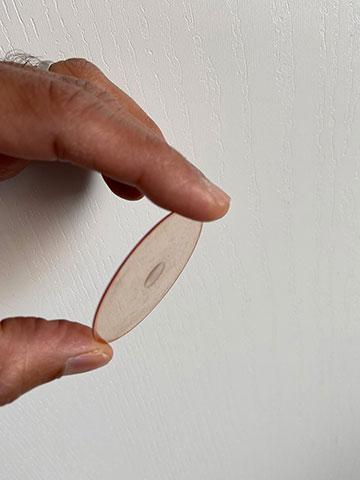
Using a single lens that is a few microns thick, patterned onto a glass substrate 0.6 mm thick, researchers have created a camera that does not require focusing. [Image: Rajesh Menon, University of Utah]
The next generation of cameras and imaging devices—for autonomous vehicles, biomedical imaging and a host of other applications—must be smaller and lighter than their predecessors while still providing great vision. Researchers at a U.S. university have devised a new kind of flat lens that can give a camera an extreme-depth-of-field, focus-free view (Optica, doi: 10.1364/OPTICA.384164).
The lens, made by University of Utah electrical engineer Rajesh Menon and his colleagues, is called a multi-level diffractive lens because it is basically a concentric diffraction pattern etched onto a flat surface. Mathematically, the lens design treats the phase of light in the focal plane as a free parameter.
Taking focus to extremes
Depth of focus depends on such factors as the wavelength of illumination and the numerical aperture of the lens system. Many schemes to push depth of focus past the diffraction limit exist, such as wavefront coding, aspheric lenses and apodizers. However, they introduce tradeoffs, such as lowering the signal-to-noise ratio, while enhancing the depth of focus by factors ranging from 4 to 600.
By allowing the phase to vary in their calculations while constraining the intensity of illumination, Menon’s team designed a thin lens that looks like tiny concentric rings filling an aperture 1.8 mm in diameter. Through a photoresist procedure, the researchers inscribed the design onto a glass substrate 0.6 mm thick. The individual rings had a width no greater than 3 μm and varying heights up to 2.6 μm.
After creating the lens, the team set it up on an optical bench with a near-infrared light source and CMOS sensor for basic imaging experiments with a standard resolution chart and several 3D objects. In the latter tests, the researchers placed the objects to create a depth-of-field span ranging from 200 mm to nearly 6 m. Unlike a cellphone camera that was used for comparison, the multi-level diffractive lens produced sharp images across the depth of field.
Future redesigns
In the experimental scenarios, the thin lens demonstrated a depth of field that exceeds the diffraction limit by a factor of more than 30,000 over a conventional lens. Of course, that was with near-infrared illumination. Future tasks include redesigning the lens to work at visible wavelengths and standardizing the manufacturing process.
